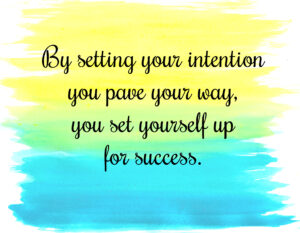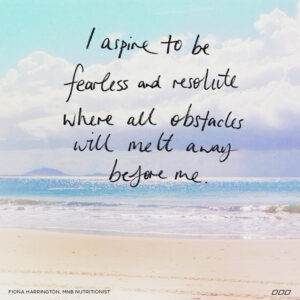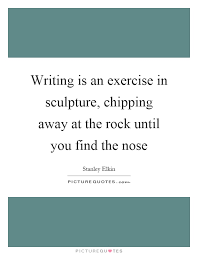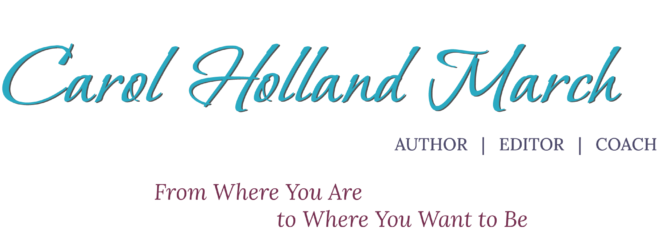[et_pb_section fb_built=”1″ _builder_version=”3.22″][et_pb_row _builder_version=”3.25″ background_size=”initial” background_position=”top_left” background_repeat=”repeat”][et_pb_column type=”4_4″ _builder_version=”3.25″ custom_padding=”|||” custom_padding__hover=”|||”][et_pb_text _builder_version=”3.27.4″ border_style=”solid”]Kindle Reader for PC
Kindle Reader for Mac
[/et_pb_text][/et_pb_column][/et_pb_row][/et_pb_section]
The Dreamwalkers of Larreta, Book 2
 I’m thrilled to announce the publication of my second book of the visionary fantasy trilogy, The Dreamwalkers of Larreta.
I’m thrilled to announce the publication of my second book of the visionary fantasy trilogy, The Dreamwalkers of Larreta.
If you like to read fantasy with a metaphysical twist, I hope you’ll try my books. Both are now available in electronic format. The Tyro is in paper now, and The Rending will soon be out in paper soon.
The Tyro is the first book in the trilogy about earth-born dreamwalkers who re-unite on the world Larreta after centuries of incarnations on earth. They have barely arrived when they are thrown together to solve the mystery of time rifts that threaten the existence of all life on Larreta.
Jesse holds the secret to the origin of the rifts. He swears he and Leo are old friends, but Leo can’t remember him and isn’t sure he wants to. To save both worlds from destruction, Leo’s memories must surface so he and Jesse can create a vital passage through time and space. But can he face the pain of his past and form a bond of trust with Jesse before it is too late?
In The Rending, Leo and Jesse join forces to create a volatile passageway through time and space. Leo’s skill is looking backward in time, while Jesse sees the future, even when it endangers his life. But Jesse hasn’t learned to control his abilities. And Leo doesn’t dare succumb to his passion for the beautiful newcomer.
The fate of two worlds depends on the bond of trust developing between them but the dark puppet master behind the rifts has other plans. And patience is her greatest virtue.
Visionary Fiction
 When I started writing short stories, I was struggling with my novel, which refused to bend to my will. I wanted to write a fantasy about the characters who lived in my head and the alternate worlds they inhabited, but they kept wanting to tell me about their re-incarnational experiences on earth.
When I started writing short stories, I was struggling with my novel, which refused to bend to my will. I wanted to write a fantasy about the characters who lived in my head and the alternate worlds they inhabited, but they kept wanting to tell me about their re-incarnational experiences on earth.
So I put the book aside, used my dreams as a starting point, and wrote shorter fiction. More manageable, I thought. Again, the characters kept bumping up against the veil that separates ordinary reality from what lies beyond.
I shouldn’t have been surprised since that happened frequently in my everyday life. It seemed more natural, so why shouldn’t my fiction reflect what visions as well as actions, flights of fancy as well as plans and goals?
I had to study meditation and then metaphysics before I realized that my reality was normal even though it included phenomena most people didn’t recognize. Just lucky, I guess.
Now that I have learned more and written a lot more, I find my work falls into the category of Visionary Fiction, a subset of speculative fiction (fantasy, science fiction, paranormal, horror) that uses ancient teachings to inform the present day.
According to the Visionary Fiction Alliance, a growth in consciousness is the motivation for protagonists in this type of fiction. It explores human potential and celebrates the possibility for evolution and co-creation. The plot elements of dreams, visions, reincarnation, and psychic abilities figure prominently. Finally, a place where I fit in!
My book of short stories, The Way Home, explores the journeys of characters who are trying to get home and keeping bumping up against an invisible wall.
The Dreamwalkers of Larreta is a fantasy trilogy, published by Ellysian Press. Two spirits have furthered their education through the trials of earth incarnations so they can return to Larreta and find each other again. Difficulties abound.
If you enjoy fiction with a twist, characters who are more than even they know, and some (slightly skewed) insight into the human condition, you might enjoy reading visionary fiction. You could start with the visionary fiction reading group on Goodreads.

The Tyro is out in Paperback!
My new novel, The Tyro, is now available in paperback on Amazon. Book One of the fantasy trilogy, The Dreamwalkers of Larreta, it has already been well received by reviewers for which I am very grateful.
We are having a Facebook Celebration for Tryo on October 2, 4-6 PM PDT. Join us for games, contests, and the chance to win free books. I’ll be there to answer any questions you might have.

The Dreamwalkers of Larreta are Here!
I am thrilled to announce the publication of The Tyro, Book One of the fantasy trilogy, The Dreamwalkers of Larreta. Pubished by Ellysian Press, The Tyro is now available on Amazon!
This story has been rattling around in my mind and haunting my dreams for a long time, so it is gratifying to finally be able to share it with you. The electronic version is out now, and the paperback will be available soon for those of you who prefer to hold your books.
It means a lot to to an author to be read. On Amazon, a book’s success is often defined by its sales in the first months of its release, so if contemporary fantasy, metaphysics, adventures across worlds and a romance that spans centuries interests you, please consider The Tyro.

Clear the Decks! Change is Coming!
 Does your inner critic stop you from accomplishing your goals? Maybe with sabotage?
Does your inner critic stop you from accomplishing your goals? Maybe with sabotage?
There’s no time. I’m too old to start. Too busy to make time. Too involved with my job to exercise, eat better, start a journal, follow my heart.
The voice of negativity can be a harsh critic. Or, it can be the voice of guilt.
Why waste time on your development when your friends and family need you to care for them?
It might be mildly reproving.
You want to stay safe, don’t you? Have enough money for your retirement? Avoid potential disaster?
The voice of the critic is the voice of resistance.
Resistance does not always have bad intent. Mostly, it wants to keep us safe. Which means, taking no risks, not trying for anything better.
As long as we go along with the program, it bubbles along below the surface like an underground stream.
The minute we have an idea to change our life for the better, it rears up and spouts its negativity into our ears. Suddenly we get busy with worthwhile projects. People need things. The car breaks down. The refrigerator starts making an awful grinding sound.
We have to take care of these things, right? Wouldn’t a responsible person do exactly that?
If you are not doing what you want to do.
If you make decisions to change your life, but don’t follow through.
If you want to be more creative, but bog down due to time constraints, overwhelm, or conflicting demands, it’s time to look at your relationship with your own intention.
It’s time to clear the decks.
Intention is a habit. All habits are formed through repetition. What we hear all the time becomes familiar. What we get validation for, we repeat.
Maybe it’s time to allow our creative, life affirming part to lead the way and validate us for what will move us forward in the larger sense.
The first step is to clearly state our intention.
Take a few minutes and think about what, specifically, you want to do. Then write the statement in the present tense, first person.
I write in my journal for fifteen minutes every day before I go to work.
I walk four times a week for thirty minutes.
I no longer eat sugar.
I finish a chapter of my novel every month.
I take a painting class every Saturday afternoon.
If you have a robust inner critic, you might hear the voice complaining, protesting or arguing with you. You can ignore it. Or, you can simply tell it that you are developing a new habit and would appreciate its support. Whether it acquiesces or not, you go on.
It takes thirty days to develop a habit, so give yourself at least that amount of time.
It can help to track the days when you complete your goal. Post the list in a place where you see it every day.
Is Intention a Force I Can Call Upon?
Many people believe intention as a force in the universe. Lynne McTaggert calls it The Field: The Quest for the Secret Force of the Universe, the energetic, invisible connection among all living things. Many spiritual writers refer to it as an aspect of Source, the divine, the creative self, the superconscious mind. I think of it as an aspect of myself that Knows.
From this perspective, intention can be called upon. Once we understand that we are more than our ego-mind, more than the physical, more than the inner voice of the critic, we can take active steps to connect to the force of intention. It will help us stay on track when the inner voice advises us that we’re too busy, too tired and too overwhelmed to do what we decided to do.
Writer McTaggart’s studies of the field resulted from interviews with scientists who relayed experimental results that could not be explained by “normal” means. She went on to develop The Intention Experiment: Using Your Thoughts to Change Your Life and the World that enlists people via the Internet to change the world through their thoughts.
Scientist Emoto discovered that intention clearly stated, thought or written, changes the molecular structure of water. The Hidden Messages in Water
Physician Larry Dossey writes about how prayer can assist in the healing of physical illnesses. Healing Words: The Power of Prayer and the Practice of Medicine
Intention is powerful. It is available. You too can use it to change your life.
What about you? Do you have an example of when you used your intention to make a positive change?
Whatever you can do or dream you can, begin it. Boldness has genius, power and magic in it. Begin it now!
Goethe
\
How to Conquer the Inner Critic Who Runs You Ragged
 Help! I’ve Run Out of Time!
Help! I’ve Run Out of Time!
When I teach classes on creativity and writing, the number one problem students mention is they don’t have time for the writing, painting, or designing they long to do.
Believe me, I know. I suffered for years from the twin syndromes: “I’m too busy” and “I’m too tired when I get home from work.”
Of course you’re busy. Of course I was tired. Even on vacation, our lives are hectic.
The question to ask is, how can I figure out how to allow myself to invite more happiness into my life?
I say that because people who participate in creative work, paid or unpaid, public or private, are happier, healthier and more satisfied with their lives. This is true regardless of income, education, and socio-economic status.
If you have urge to create something, even if you don’t know what, it makes sense to figure out how to get less busy.
The busyness syndrome is real and it is deadly. Modern society supports it. Busy is good, right? If you’re busily creative, sure. If you’re busy with busywork, not so much. Being overly preoccupied with details is a sure sign that your busyness might not be productive.
The busyness syndrome is manageable if your inner critic is only moderately strong.
Time management tomes advise us to declutter, set goals, re-arrange our schedules, dispose of or delegate less urgent tasks, and set up organizational systems. All are useful and important,
But what if your inner critic is heavily muscled and overbearing? It might not even let you start. It might tell you that other people’s needs are more important than your desire to create.
It might say that you’re bad, wrong, deluded or stupid to consider spending time on what you love.
It might entice you with movies, gaming, shopping, cleaning, television, even volunteering. After all, it’s more important to help others than yourself, right.
If you are blocked and unable to start, move past a certain point in your work, or allow yourself to work regularly, there are things you can do to convince your critic to back down.

- Recognize that the negative messages you are getting are not coming from you, but from the critic. Acknowledge the critic. It is part of your conscious mind. Its goal is to keep you safe, which it interprets as not taking risks.
- Form a clear intention to do your work. Write your intention in present tense and post it where you can see it every day.
- Set specific times to work. Try to choose the same time for every session. At the appointed time, be there. Beforehand, do what you need to do to get ready. Some people light a candle, say a prayer, meditate, close the door, turn off the phone.
- Gather any resources you need and have them at hand. Don’t leave your space to find anything. If the internet tempts you, find a program to block it during your work time.
- Stay in your appointed spot for the designated time. Even if you don’t work, stay there. When the time is up, leave. This will help develop a habit, and you’ll find before long, you’re becoming productive.
- Notice that your intention to do creative work is part of the universal field. You can connect to it any time. Notice that the critic is part of the ego mind. When you connect to the universal intention, it is much easier to say no to the critic.
- Find a way to reward yourself for learning a new habit that will increase your happiness. At minimum, tell yourself “I am creative. I spend time regularly on my creative work.”
- Remember to forgive yourself for any judgements you make against yourself. Forgiveness opens you to the universal intention. If you do it enough, it becomes a habit, and before long, your critic will turn into a positive ally.

How to Forgive Your Inner Critic and Move on With Your Life
 We all have an inner critic. It’s a function of the conscious mind. Some have huge, robust, well-developed critics that comment and decide on every aspect of our lives. Others, more fortunate, have milder critics who appear only once in a while.
We all have an inner critic. It’s a function of the conscious mind. Some have huge, robust, well-developed critics that comment and decide on every aspect of our lives. Others, more fortunate, have milder critics who appear only once in a while.
Every spiritual and psychological system of personal growth has ways to deal with the aspect of mind that criticizes, blames and judges to keep us where we are. The critic believes it is acting in our best interest.The critic wants to keep us safe.
Deciding to use forgiveness to work with the inner critic is a radical method that I have found works. This is not seeing the critic as an enemy in a war. While many are comfortable and energized by doing battle with what needs to be changed, I have never liked the idea of war. More useful is the idea of inquiry. The most severe critic is still part of us. It may sound like Mom or Dad of our second-grade teacher, but it lives inside our heads.
The ancient Hawaiian prayer of forgiveness, the Ho’oponopono, is a compassionate tool for personal work. It seems almost too simple to be effective, yet that is its beauty. Ulrich E. Dupree, author and teacher, wrote a little book about the Hawaiian ritual of forgiveness and how it can affect your life, your family relationships, friendships, even the environment.
The simple prayer is:
- I am sorry
- Please forgive me
- I love you
- Thank you
That’s it. A short prayer with roots into antiquity, it is part of the Hawaiian Huna tradition which teaches there is one power in the universe, the power of love. Ho’oponopono is compassion in action.
Its practice is a way of returning to unity, releasing judgment and condemnation toward the self and others, and finding harmony. Since it requires acting from the heart, it could be seen as a way of returning to the divine plan, which has compassion for all that exists.
This may be the opposite of what you learned. From infancy, we learn dichotomies, right and wrong, good and bad. All our institutions follow the hierarchical model. We move up or down, in school and then in work.
What stops us from experiencing the harmony and freedom from pain is our thinking minds. We come to adulthood attached to cares, fears, comparisons, standards, and beliefs about what we need to be happy.
The Ho’oponopono method of working with unease or distress takes a different approach. Instead of figuring out what we need to do, learn or achieve, these are the steps:
- We ask to reach within ourselves a place of recognition, courage, power, intelligence and peace.
- From that place, which can be described as sitting in the heart, we describe the problem and then search for our share in it. That could involve, for example, a judgment we’ve made, or an action, or a memory.
- We forgive unconditionally and speak the four sentences: I am sorry. Please forgive me. I love you. Thank you.
- We give thanks, express trust and let go.
This method of personal change implies acceptance that we are co-creators of everything in our lives. On some level of awareness, we have accepted all we encounter. That does not mean we need to keep accepting it. Once we become aware enough to notice an issue, it is usually ready for healing.
I have found this method works, not only to forgive myself and others for making judgments, but to forgive my judgments of aspects of myself.
I find self-marketing challenging. I resist it. My inner critic tells me I’d be better off spending more time creating my fiction, not developing a platform to sell it.
That does not take into account the realities of today’s publishing world. Therefore, I can forgive the part of myself that does not want to spend time on marketing. As I do that, I can delve deeper into the issue and discover what I’m really afraid of.
This simple technique works wonders with resistance, with any form the inner critic takes.
I’m sorry. Forgive me. I love you. Thank you.
Everything has a right to exist. Even resistance.
The more we battle with what we don’t like, the stronger it gets. Forgiveness softens the hard, unyielding parts of ourselves that reach from the past to fasten their tentacles into our minds and keep us from living fully.
Even if you’re not convinced, try the Ho’oponopono prayer. It has worked wonders for many people.
To learn more about this method of forgiveness, read Ho’oponopono: The Hawaiian Forgiveness Ritual as the Key to Your Life’s Fulfillment
Turn Your Inner Critic Into an Ally
 Do you have an inner critic? Do you recognize its voice?
Do you have an inner critic? Do you recognize its voice?
You know the one I mean. It whispers, “How could you be a writer? Start a business? Stay on a diet? Stick to an exercise program?”
It murmurs in the background, always on alert, ready to stop you from moving forward.
Or, maybe you don’t even hear it. Maybe you stall out in the middle of a new venture. Lose interest. Get too busy. Decide it wasn’t important.
Resistance is a force. It’s human and it’s normal. Everyone resists change. Some a little, some a lot. Resistance seems to be a function of how our brains work, so it’s nothing to judge yourself for. The point is to recognize it, and learn how to work with it.
The inner critic is a form of resistance that is especially virulent because it mimics our inner voice. We listen to the critic and believe we are hearing ourselves. In fact, we’re hearing an internalized judgment from parents, teachers, friends, the community or the larger culture.
You can think of the inner critic as a recalcitrant child, a part of us that has not evolved. It’s stuck in the past. Something hurt it, and now it wants to protect you from experiencing more pain.
Better safe than sorry. Why rock the boat? What if I try and fail?
The problem with this approach is that we stagnate. Potential goes untapped, hopes fade, creativity withers and enthusiasm is lost. All because we weren’t willing to engage the inner critic.
Something as simple as asking yourself if its messages are true TODAY can work wonders. If you engage it, you can find out what it wants. You can help it evolve and come into the present.
Instead of seeing the inner critic as a force to be ignored, defeated, boxed in, argued with, silenced or stomped on, a gentler approach could transform it into an inner ally.

An inner ally supports, encourages, focuses on the positive, sets goals, makes plans, knows that growth is process, is a learner, and remembers that others are more focused on themselves than on judging us.
There are many ways to change your relationship to the inner critic. I have found this simple process to work for me.
1. Sit quietly. If you meditate, pray, or quiet your mind in nature that’s the perfect time for this exercise. If you journal, you can engage your critic with free writing.
2. In your mind or aloud, say “hello.” Allow an image, a sensation or words to appear. Say “hello” again.
3. In your mind or your journal, ask your critic if she is willing to talk to you. (this may be a little unfair, since she’s doing it all the time, but it’s polite, and often changes the dialogue).
4. Ask her why she is giving you negative messages.
5. Listen. Do not argue. Simply listen.
6. Conclude by writing and/or drawing what you asked and learned from your critic.
You can repeat this exercise with any question. You can offer the critic alternative ways of looking at the issue at hand. When you hear a negative message, you can turn it around.
For example, if your critic say, “It’s too cold to go for a walk today. Just stay inside.”
You could say, “Yes, it is cold. But I’ll wear my heavy coat and I’ll feel better if I complete my goal of exercising four times this week.”
With practice, you can turn around any negative programming that’s stuck in your brain. As you realize that your beliefs can be changed, your inner critic will gradually transform into an ally.
7. The last step of this exercise is the most powerful. Conclude each session by forgiving the critic and yourself.
My next post will be about a simple, yet profound method of forgiveness that has helped me shift my critic into an ally.
What about you? Does an inner critic hold you back?
Chipping Away at Resistance
 I’m an introvert. I’ve always known it, and it’s one of the few things I never judged myself for.
I’m an introvert. I’ve always known it, and it’s one of the few things I never judged myself for.
By “introvert,” I mean a person whose focus of attention is toward the inner world. While extraverts seek information outside themselves, we introverts aren’t satisfied until we process outer information through our inner filters. Many introverts are p(erfectly comfortable in social situations.We do need alone time, though.
(To learn how to be a successful introverted writer, try Hope Clark’s excellent book.The Shy Writer Reborn: An Introverted Writer’s Wake-up Call.)
For me, meditation and solitude are natural. I’m familiar with the internal landscape. My inner voices are old friends.
Even knowing this, even with experience using journaling and meditation to figure out what’s going on with me, I fall prey to the trap of listening too much to others.
When I started writing for publication, I wanted to publish. Writers want to be read, right? With research and effort, I made progress. Next came marketing. Internet marketing seemed like a natural fit. So I learned. Read. Took courses. Read blogs. Learned strategies.
Great. Wonderful.
Except it wasn’t.
I was listening to others’ opinions about what was marketable. I’m a creative intuitive, remember, so I love ideas. I love to follow them, apply them. Before long, I had so many projects, paralysis set in.
I was learning craft, the fiction market, how to position books, how to blog, how to develop a web site, how to use Facebook, twitter and forums. It was not only overwhelming, it brought all my insecurities to the surface.
Many times, I threw up my hands. The only time I was really happy was when I focused solely on writing my novels.
The other day I was re-reading Steven Pressfield’s excellent follow-up book to The War of Art. It’s another short, simple read called Turning Pro. I highly recommend it.Turning Pro: Tap Your Inner Power and Create Your Life’s Work.
As I was pondered my recent rejections and how more than one beta reader had recently commented I wasn’t taking risks, with my fiction, it hit me.
As much as I listen to my inner self, I was using the distraction of marketing to avoid opening to a deeper level in my own writing. I knew, vaguely, that the deeper level was there. I wanted to get to it.
On the other hand, that takes time and there’s this article to write, and my latest book to market, and editing on that new story, and I have client work to finish, and . . .
Shut up, I said to myself. If turning pro means, as Pressfield claims, facing my fears and listening to the Muse, then I must listen to the message that a deeper part of myself is calling.
Turns out, as with most things, there are levels.
 I committed to serious writing several years ago. That decision is made. But I get sidetracked on marketability. What will sell? What does the market want?
I committed to serious writing several years ago. That decision is made. But I get sidetracked on marketability. What will sell? What does the market want?
Then I remembered a lesson I learned long ago. There is a tone inside each of us. If you are very quiet and listen, you can hear it ring. It rings with your vibration. It tells you what is sacred and true. It resides in the center. The still point.
So my new resolution is to write from as close to my own center as I can get. This will vary from day to day. That’s okay.
For an introvert who enjoys solitude, it was humbling to learn that I have resistance to silence, to turning inward, to listening to the voice within. Embarrassing. But that’s what always happens when another piece of resistance falls away.
The upside is that energy releases and creativity flows more freely. Totally worth it. So I’m committed anew. To listening more deeply. To quit surfing over the waves and diving deep. That’s where my tone beckons me.
What about yours?


